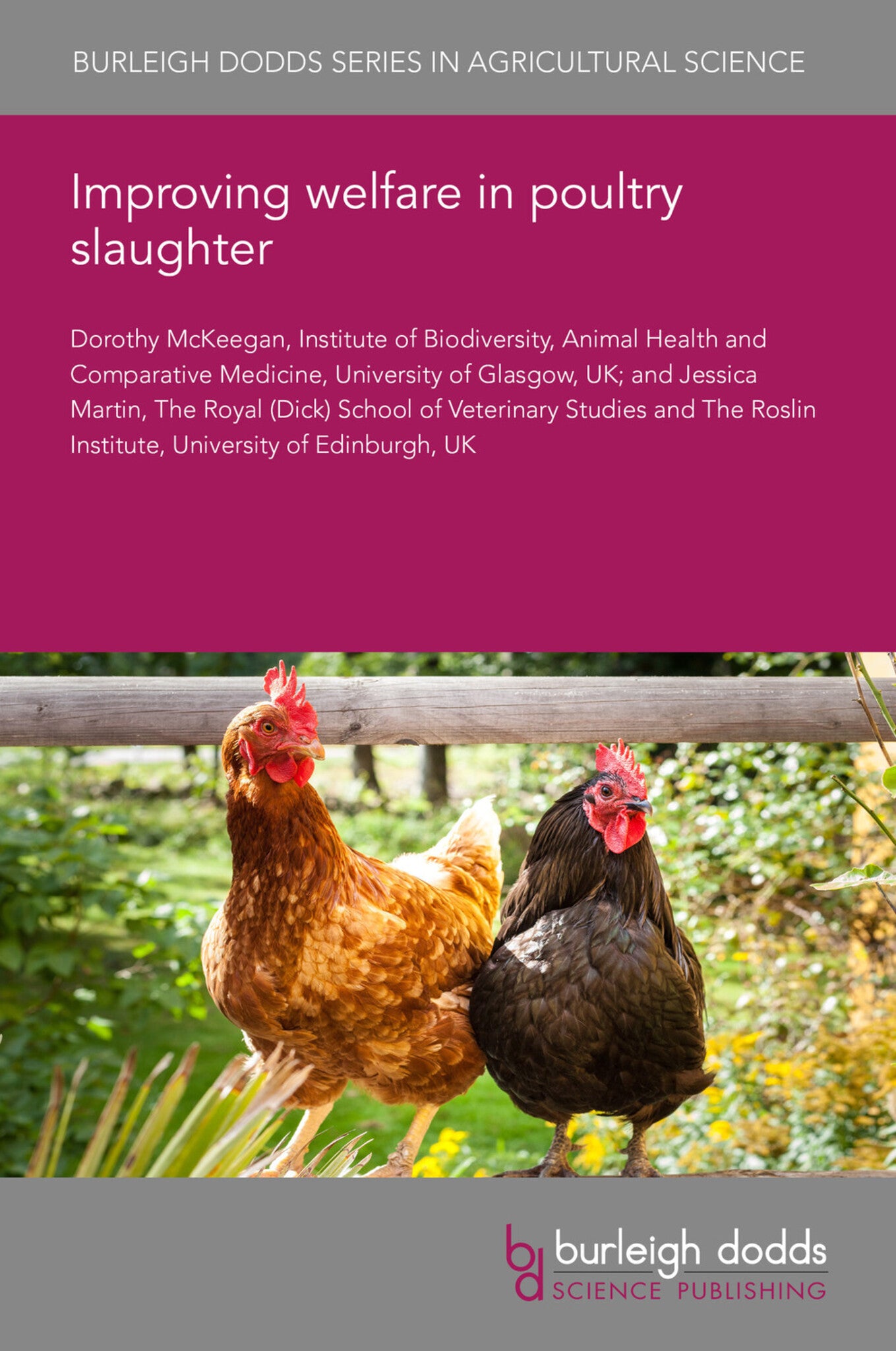We're sorry. An error has occurred
Please cancel or retry.
Improving welfare in poultry slaughter
Regular price
£25.00
Sale price
£25.00
Regular price
£0.00
Unit price
/
per
Sale
Sold out
Re-stocking soon
Poultry production involves the killing of very large numbers of birds so there is a compelling need to protect welfare at slaughter. In most countries, slaughter must be preceded by stunning to in...
Read More

Some error occured while loading the Quick View. Please close the Quick View and try reloading the page.
Couldn't load pickup availability
- Format:
-
28 September 2020

Poultry production involves the killing of very large numbers of birds so there is a compelling need to protect welfare at slaughter. In most countries, slaughter must be preceded by stunning to induce unconsciousness. The major stunning approaches used in chicken slaughter are electrical stunning and methods that modify the atmosphere (via introduction of gas or reduction in air pressure). Electrical stunning can be humane but in practical use it is associated with significant welfare issues, primarily due to variability in effectiveness and aversive handling. Controlled atmosphere stunning overcomes negative bird handling and improves the reliability of stunning in high throughput systems, but is associated with an induction to unconsciousness that is not instantaneous leading to likely welfare harms such as respiratory distress. Opportunities to improve welfare at slaughter arise from continued research into improved methods, and wider adoption of methods with lower welfare costs.

Price: £25.00
Publisher: Burleigh Dodds Science Publishing
Imprint: Burleigh Dodds Science Publishing
Series: Burleigh Dodds Series in Agricultural Science
Publication Date:
28 September 2020
ISBN: 9781786768780
Format: eBook
BISACs:
TECHNOLOGY & ENGINEERING / Agriculture / Animal Husbandry, Poultry farming, TECHNOLOGY & ENGINEERING / Agriculture / Sustainable Agriculture, Sustainable agriculture, Animal husbandry

1 Introduction 2 Lairage 3 Stunning methods 4 Conclusions 5 Where to look for further information 6 References



